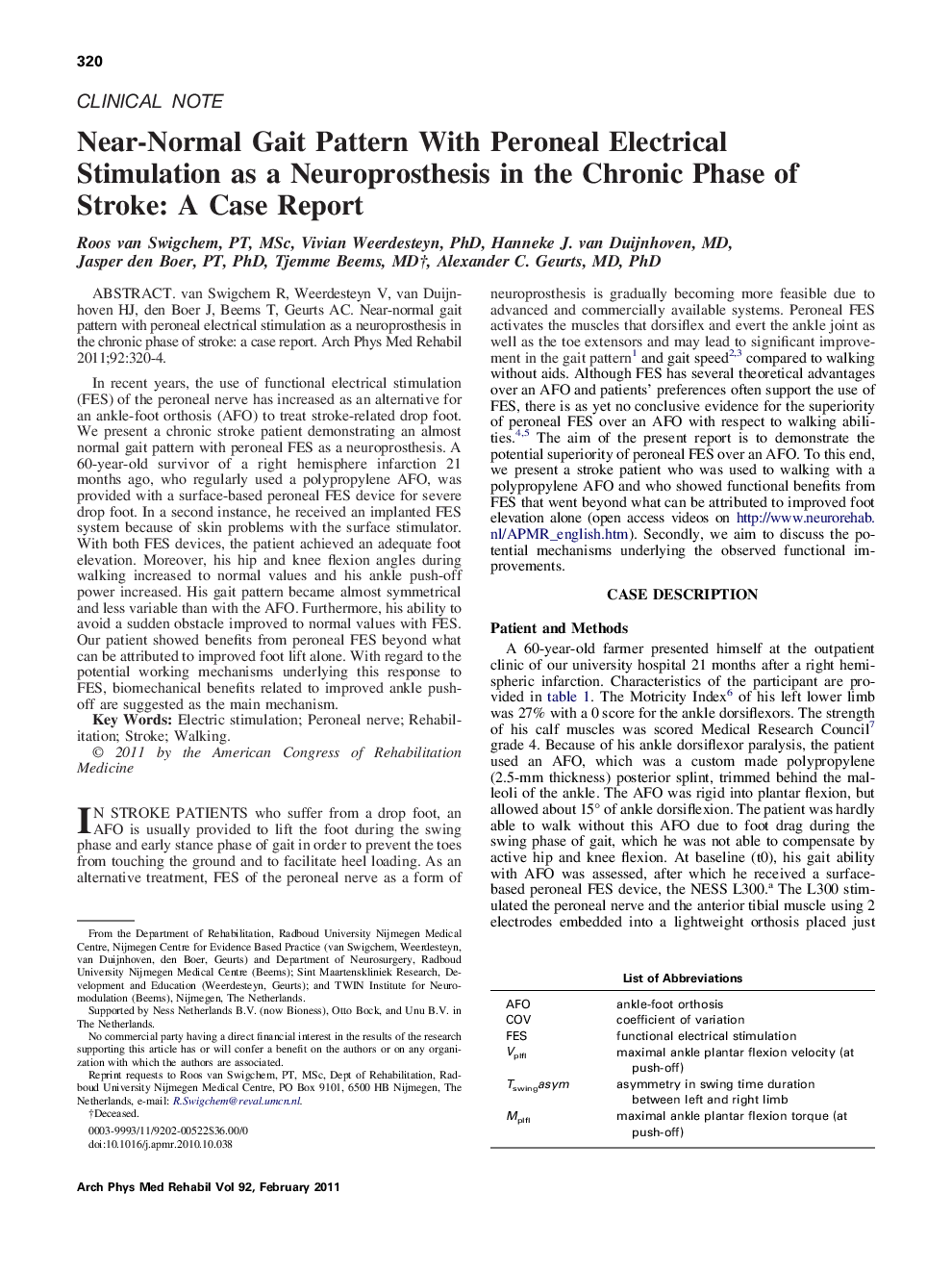| Article ID | Journal | Published Year | Pages | File Type |
|---|---|---|---|---|
| 3450495 | Archives of Physical Medicine and Rehabilitation | 2011 | 5 Pages |
Abstract
In recent years, the use of functional electrical stimulation (FES) of the peroneal nerve has increased as an alternative for an ankle-foot orthosis (AFO) to treat stroke-related drop foot. We present a chronic stroke patient demonstrating an almost normal gait pattern with peroneal FES as a neuroprosthesis. A 60-year-old survivor of a right hemisphere infarction 21 months ago, who regularly used a polypropylene AFO, was provided with a surface-based peroneal FES device for severe drop foot. In a second instance, he received an implanted FES system because of skin problems with the surface stimulator. With both FES devices, the patient achieved an adequate foot elevation. Moreover, his hip and knee flexion angles during walking increased to normal values and his ankle push-off power increased. His gait pattern became almost symmetrical and less variable than with the AFO. Furthermore, his ability to avoid a sudden obstacle improved to normal values with FES. Our patient showed benefits from peroneal FES beyond what can be attributed to improved foot lift alone. With regard to the potential working mechanisms underlying this response to FES, biomechanical benefits related to improved ankle push-off are suggested as the main mechanism.
Keywords
Related Topics
Health Sciences
Medicine and Dentistry
Medicine and Dentistry (General)
Authors
Roos PT, MSc, Vivian PhD, Hanneke J. MD, Jasper PT, PhD, Tjemme MDâ , Alexander C. MD, PhD,
